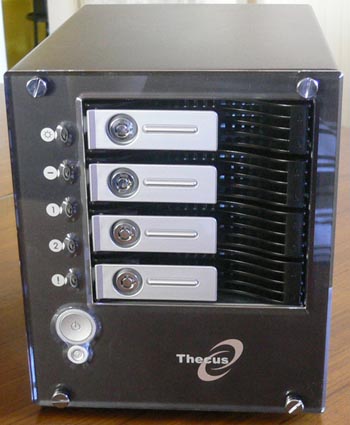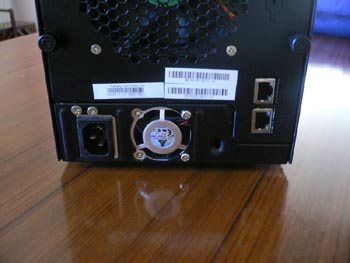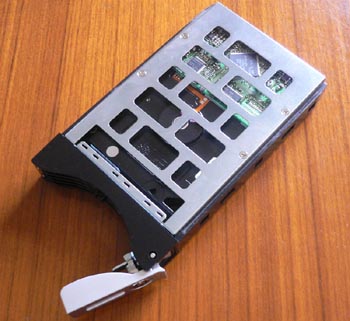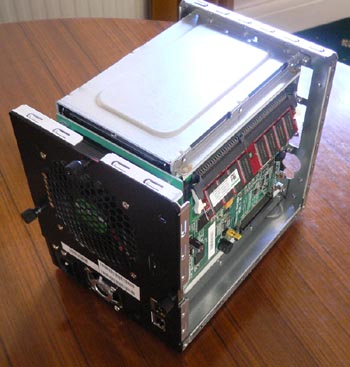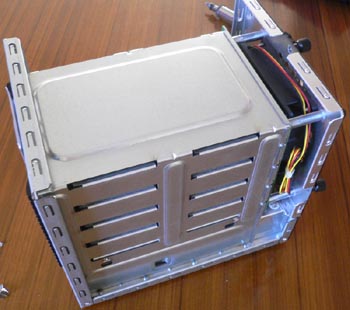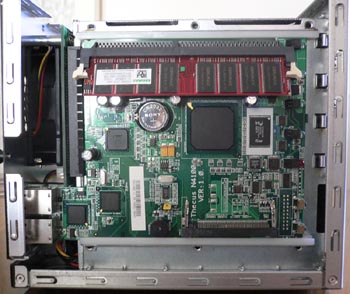External Look
When I think NAS, I tend to think rack mount storage, or something mean-looking sat in the server room. The N4100 shatters that image.
A sexy little black box, with a Plexiglass fascia and, during operation, LEDs including that most wondrous of LED colours, bloo. It's almost wrong to hide this thing away; it should be sat somewhere in view, where you can show off your new NAS box.

Around the back we've got an 80mm Sunon fan keeping the system and drives cool, along with the two network interfaces and the PSU
Closer inspection of the PSU reveals it has a delta fan. Worry not, however, for this and the Sunon fan don't create that much noise. It's not silent, but it won't draw too much attention to itself if sat in an office. 200Watts should be ample to power four hard drives and the Thecus system.
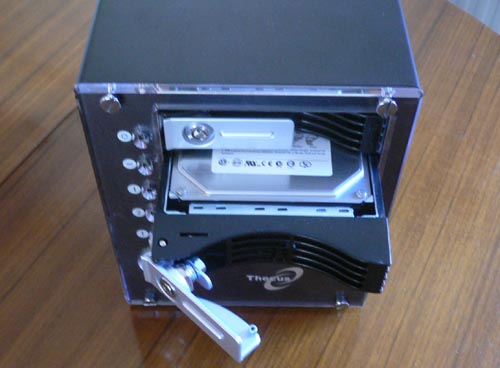
Moving to the front again now, each of the four drive caddies can be locked with a key. Removing them is a simple unlock and pull affair, SATA connectors working in a similar fashion to what we've seen from SCA in SCSI systems; no cables to unplug.
The drive caddies themselves are well constructed, with support running across the bottom of the drives, but with vents to allow movement of air.
Taking a look inside, the N4100 is very neat. The only cables required are from the PSU to the mainboard and drive cage along with the rear 80mm fan. Everything is packed in, with efficient use of space, but it's still possible to get access to all parts of the system, should it be necessary.
The RAID array is enclosed in a sturdy steel cage. At the back you can see the 80mm fan which pulls air out of the system. There is a PCB in between the drive cage and fan, so airflow across the drives isn't optimal. However, the general flow of air is still from front to back, ensuring that the drive's don't get too hot.
Finally, a look at the mainboard. Next to the battery is the Intel IOP processor and next to that the 16MB of flash memory storing the firmware. There's an expansion slot lower down, presumably for when a Wi-Fi interface is included instead of the 2nd Gigabit NIC that was in this system. At the top is the 256MB of DDR used by the N4100.
My general thoughts on the physical design of the Thecus N4100 are that it is both tidy externally and internally. The construction is sturdy, although it is quite heavy when you have four hard drives in it.






